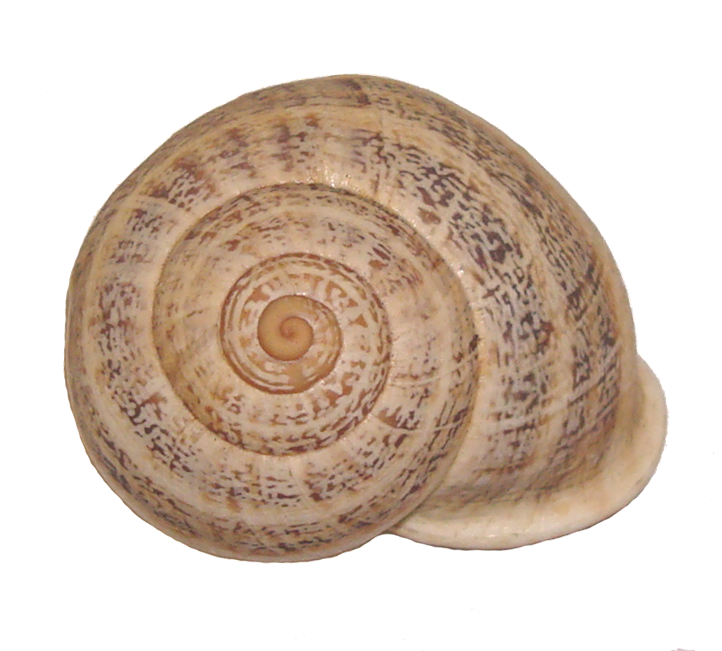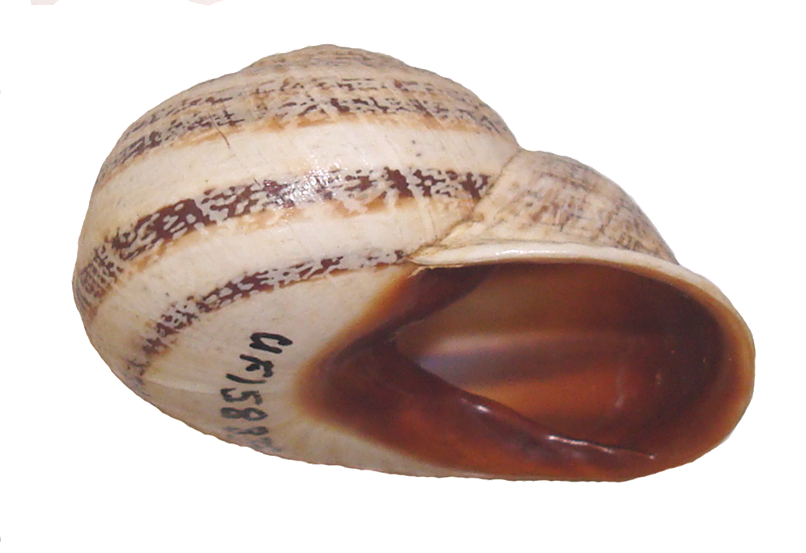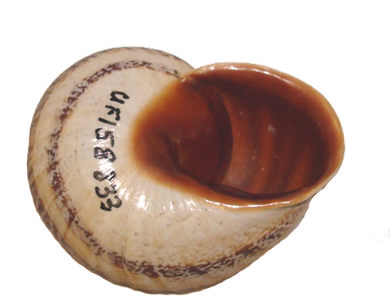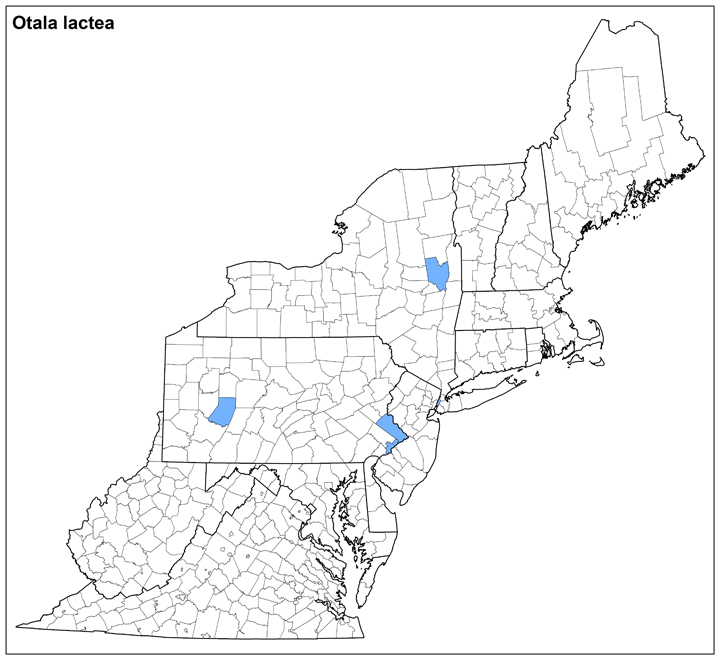Land Snails



Photo(s): Views of an Otala lactea shell
Photos © Dan Dourson
Click photo(s) to enlarge.
-
Otala lactea (Müller, 1774) (non-native)
Family: Helicidae
Common name: Milk Snail
Identification
Width: 33-39 mm
Height: 20-25 mm
Whorls: 5
Otala lactea is heliciform, with a moderately reflected lip. It has broken reddish-brown spiral color bands and well-developed transverse striae. Inside and at the lip, this snail’s aperture is strongly colored dark brown. The columellar part of the rim is broadened and appears to have a small tooth. The columellar tooth and lip color separates Otala lactea from its close relative O. punctata. The live animal is pale - yellowish or gray all over.
Ecology
Otala lactea is a non-native species considered a minor plant pest (Cowie et al., 2009), with federal and some state regulations. Native to North Africa and Spain, its typical habitat is rocky heath or steppe (in White-McLean, 2011). It is a nocturnal foliage feeder (in White-McLean, 2011).
Shells of this edible snail have been found at a Roman archaeological site in Morocco, demonstrating its long use as a food source (in Hogan, 2007). It is currently cultivated as a delicacy and is considered to be tastier than Helix aspersa, the more commonly known edible snail. Otala lactea is one of the snails that is known to employ calcareous “love darts” during mating courtship.
Taxonomy
Synonyms include Helix ahmarina Mabille, 1883, H. canariensis Mousson, 1872,Helix jacquemetana Mabille, 1883, Helix lactea, and Iberus alonensis.
Distribution
A native of Europe and parts of North Africa, this snail has been introduced to the United States. In the Northeast it has been documented in Maryland, New York, Pennsylvania, and Virginia.
Conservation
NatureServe Rank: G5, Apparently secure.
Dan Dourson, Ken Hotopp 6/2017
RANGE MAP (Click to enlarge)


